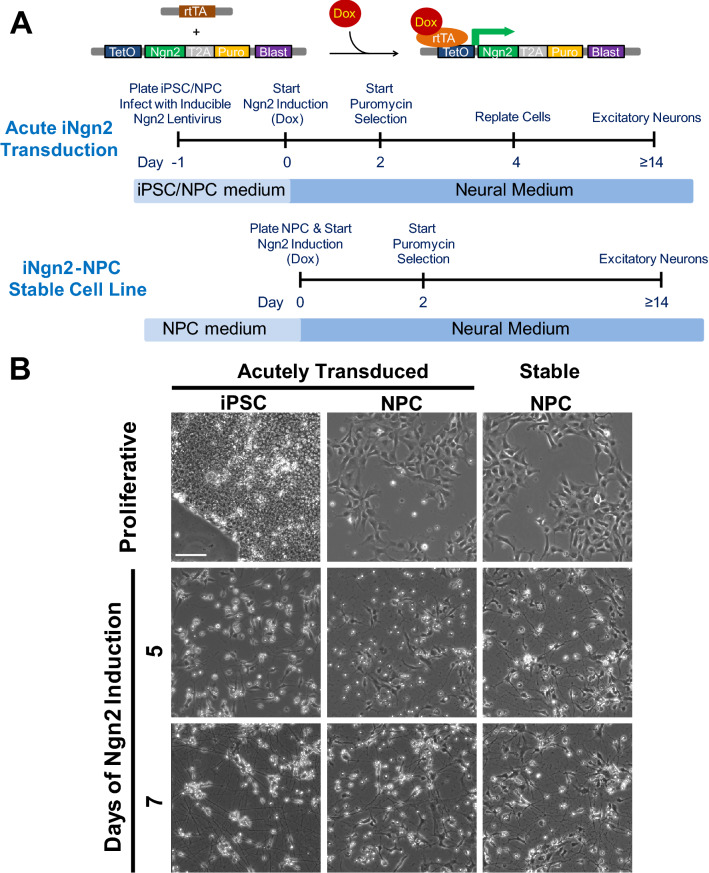Figure 1.
Schematic of the methodology and morphology of iNgn2 neurons. (A) Top panel illustrates the action of the transgenes in inducing the expression of Ngn2 in generating the iNgn2 neurons. The addition of doxycycline (Dox) results in the binding of Dox to the transactivator (rtTA) expressed of a constitutively active human ubiquitin C promoter, changing the conformation of rtTA to promote binding of the rtTA-Dox complex to the inducible TetO promoter, thereby activating the expression of Ngn2 and the puromycin (Puro) resistance marker. Stable cell lines were generated before neuronal induction with the use of the constitutively expressed blasticidin (Blast) resistance selective marker. The bottom two panels contain the timeline of iNgn2 neuron generation either by acute transduction of the Ngn2 lentivirus or induction of Ngn2 in an iNgn2-NPC stable cell line. Human iPSC or NPC were plated and transduced with the Ngn2 lentivirus at day -1 in the acute transduction method. Neuronal induction was started at Day 0 with the addition of Dox. Transduced cells were selected at Day 2 with the addition of Puro. Optionally, puro-selected iNgn2 cells can be replated at a desired density at Day 4. By Day 14, predominantly excitatory glutamatergic neurons are generated. (B) Phase contrast images of live iNgn2 neurons at various time points of Ngn2 induction. Scale bar represents 100 μm.

